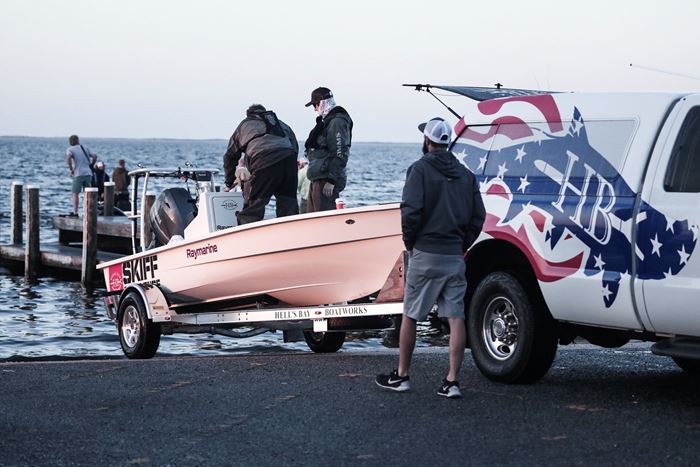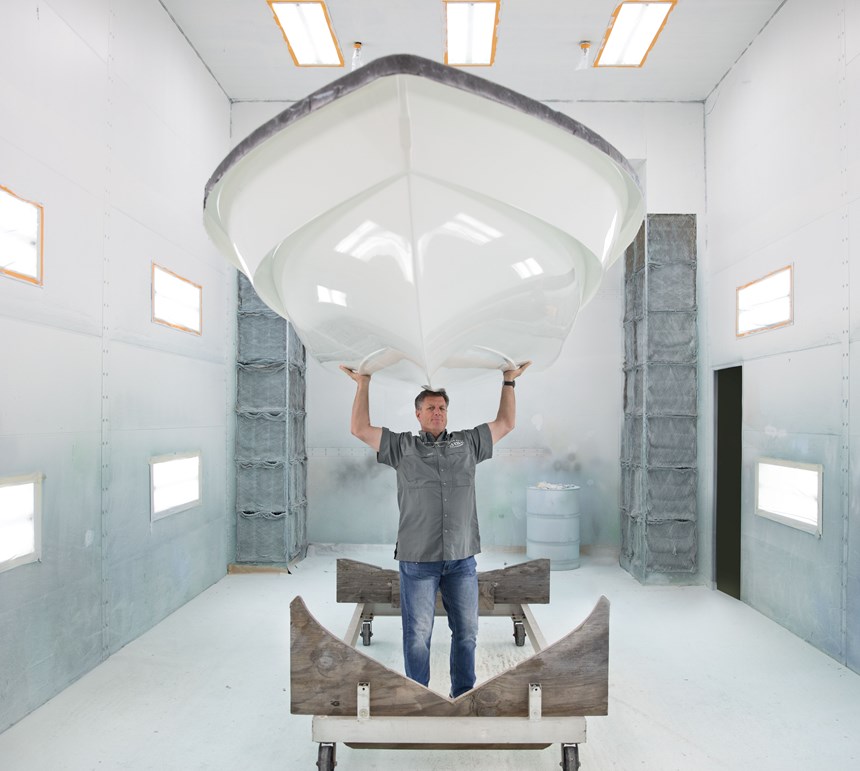Hell’s Bay skiff redesign repeats win in clean water benefit race
Open sea boat racing has proven a perennially fruitful opportunity for boat designers and builders to hone their composites skills, and the recent third running of the Skiff Challenge — a 1,600-mile endurance race around the Florida coastline, was no exception.
Open sea boat racing has proven a perennially fruitful opportunity for boat designers and builders to hone their composites skills, and the recent third running of the Skiff Challenge — a 1,600-mile, nonstop, roughly 48-hour endurance race along the entire coatline of the US state of Florida, was no exception. But when Hell’s Bay Boatwork’s (Titusville, FL, US) owner Chris Peterson got together one evening four years ago over tequila with Heath Daughtry, owner of Florida boat manufacturer Yellowfin Yachts (Bradenton, FL, US) to sketch out on a cocktail napkin (no kidding) the audacious idea for what they conceived of as a friendly competition between builders of fishing skiffs of no more than 5.5m (18 ft) length, with maximum 70 hp outboard motors, they also decided that profits from the challenge would help raise money for the non-profit environmental group Captains for Clean Water (Ft. Myers, FL, US), which advocates for better water quality within the state.
This year, 2018, was the third Skiff Challenge, with four teams participating. Starting in Pensacola, participants raced to the southernmost point of Key West, then north, ending at Cabin Bluff Lodge in Woodbine, GA, US. Hell’s Bay entry started with its Biscayne design, a small, 5m (16 ft, 4 inch) open fishing skiff. But instead of the Biscayne’s typical cored fiberglass/aramid laminate, Peterson says the Skiff Challenge boat was built with his company’s engineered carbon fiber laminate (See CW’s previous story about this craft, titled “Super Skinny Water Skiff” | short.compositesworld.com/HBSkiff. The hull, deck and bulkheads were built up from a proprietary carbon fiber/high-modulus polypropylene (HMPP) fiber woven hybrid reinforcement, featuring HMPP fiber from Innegra Technologies (Greenville, SC, US) and manufactured by Vectorply Corp. (Phenix City, AL, US), over a CoreCell (Gurit UK, Newport, Isle of Wight, UK) foam core. The laminate was wet out with Scott Bader Co. Ltd.’s (Northamptonshire, UK, and Stow, OH, US) trademarked Crestapol 1260 urethane acrylate resin. Scott Bader Crestomer 1152 adhesive was used to bond the deck to the hull and secure the bulkhead panels.
Peterson says the Skiff Challenge hull weighed 100 lb/45.5 kg less than the standard Biscayne hull. He points out that the Crestapol resin bonds better to carbon/Innegra than other resin types, which allowed Hell’s Bay to use less resin for lower hull weight. The resin, he says, also is able to absorb energy without cracking or failing: “This high-tech resin gave us a super-light but super-tough hull.” Peterson and his son JC Peterson repeated their 2017 win, completing the grueling trip in 38 hours.
Related Content
-
Plant tour: Joby Aviation, Marina, Calif., U.S.
As the advanced air mobility market begins to take shape, market leader Joby Aviation works to industrialize composites manufacturing for its first-generation, composites-intensive, all-electric air taxi.
-
Sulapac introduces Sulapac Flow 1.7 to replace PLA, ABS and PP in FDM, FGF
Available as filament and granules for extrusion, new wood composite matches properties yet is compostable, eliminates microplastics and reduces carbon footprint.
-
Carbon fiber in pressure vessels for hydrogen
The emerging H2 economy drives tank development for aircraft, ships and gas transport.
















